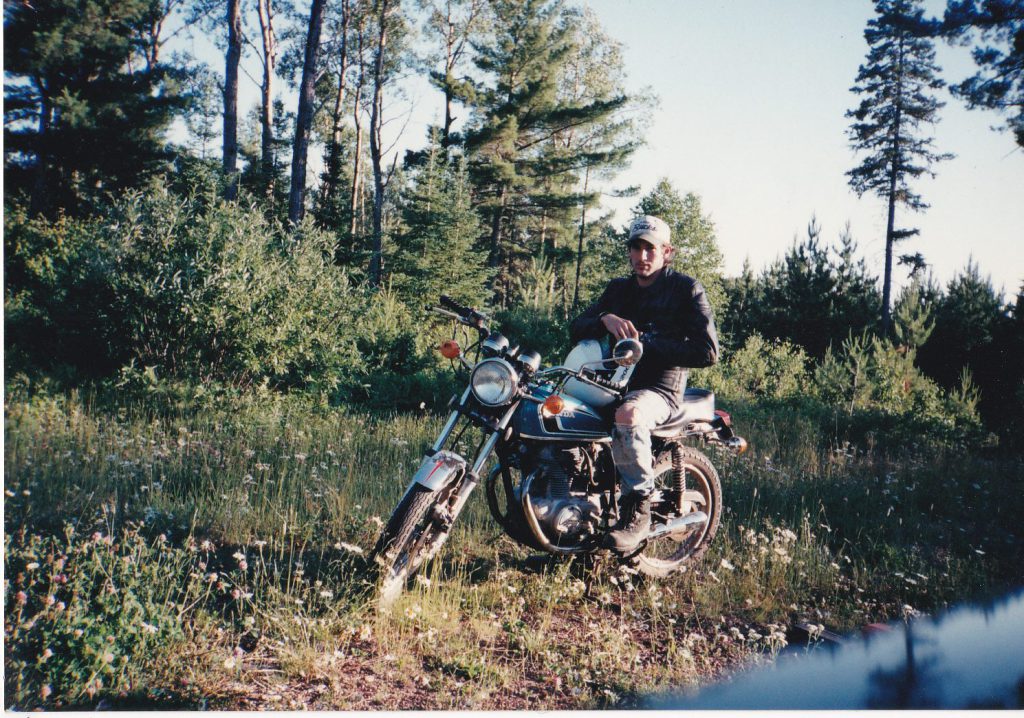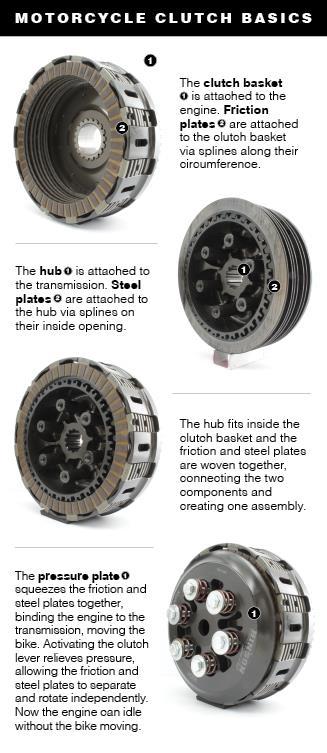How to Protect a Motorcycle Wet Clutch (and How it Works)

A 10-mile trudge down gravel roads more trafficked by mosquitoes than people.
That’s the situation I faced after dumping my Honda 350 motorcycle on a patch of loose gravel. Back then (the mid 1990s), cell phones were a luxury, especially deep in the woods of northern Minnesota where I lived. There the bike lay in a heap, the handlebars having snapped in half and now dangling by a few wires.
I sighed, shoved the bike into the weeds and started for home, which was a small camper I had acquired in exchange for a couple loads of firewood and had parked, illegally, on public land. The camper had running water, in the form of a creek several hundred yards down a logging road. It had heat, provided I had dry firewood. And it had a toilet. A several-thousand-acre toilet that doubled as state forest land.
As I call them, the Good ‘ol Days.
I loved riding that little Honda, but the bike didn’t love me. From day one, the clutch acted up. I was constantly fiddling with the linkage and clutch lever, trying to take the slop out of the clutch feel. Occasionally, the lever turned to mush and quit working the clutch altogether, forcing me to shift gears minus a clutch.
Never once did it occur to me the oil could be the issue. As I’ve come to learn, however, the oil used to lubricate a motorcycle wet clutch plays a huge role in clutch feel and effectiveness.
Motorcycle wet-clutch 101
As shown in the graphic, the clutch connects the engine and transmission via a series of alternating friction and steel plates. Wet clutches are widely used in motorcycles and dirt bikes. The term simply means the clutch is lubricated with oil, as opposed to a dry clutch. Friction plays a big role in proper clutch operation.
To illustrate, imagine sitting aboard a motorcycle or dirt bike with the clutch lever activated, idling at a red light or in a starting gate. The friction and steel plates are separated, allowing the bike to run without moving. The light turns green or the gate drops. As you let out the clutch lever, the plates squeeze together. The transition from the friction and steel plates spinning independently to becoming locked together is an example of dynamic friction. Once the plates are locked together and spinning in unison, they’re subject to the principles of static friction.
Oil chemistry important
Motor oil plays a vital role in both areas. The formulation influences the dynamic friction you experience, which is best thought of as clutch feel. Oils with incorrect frictional properties can result in inconsistent or “loose” clutch feel. This negatively affects your ability to confidently pull away from a red light without the bike cutting out, or start quickly and grab the holeshot in a race. The oil also contributes to the holding power, or static friction, between the plates once the clutch lever has been let all the way out and you’re riding. Oils with incorrect frictional properties can allow the plates to slip in some circumstances, which you’ll feel as lost power to the ground. A powerful V-twin riding up a hill, for example, can generate sufficient load to cause the clutch plates to slip and the bike to surge.
The oil’s additive chemistry has the greatest effect on performance. Friction modifiers, added to some passenger car/light truck motor oils to maximize fuel economy, can decrease the coefficient of friction within the clutch pack and result in excessive slippage. Extreme-pressure additives, commonly used in gear lubes to protect against shock loads and intense pressures, can cause excessive clutch slippage and related damage.
The key is to use a lubricant specifically formulated for wet clutches. AMSOIL Synthetic V-Twin Motorcycle Oil, Synthetic Metric Motorcycle Oil, Synthetic Dirt Bike Oil and Synthetic Dirt Bike Transmission Fluid contain no friction modifiers or extreme-pressure additives. They’re dialed-in with the correct frictional properties to promote smooth shifts and consistent clutch feel while guarding against wear for long clutch life.
Using a good oil – and riding carefully – can help you avoid those three-hour trudges down mosquito-infested back roads.


